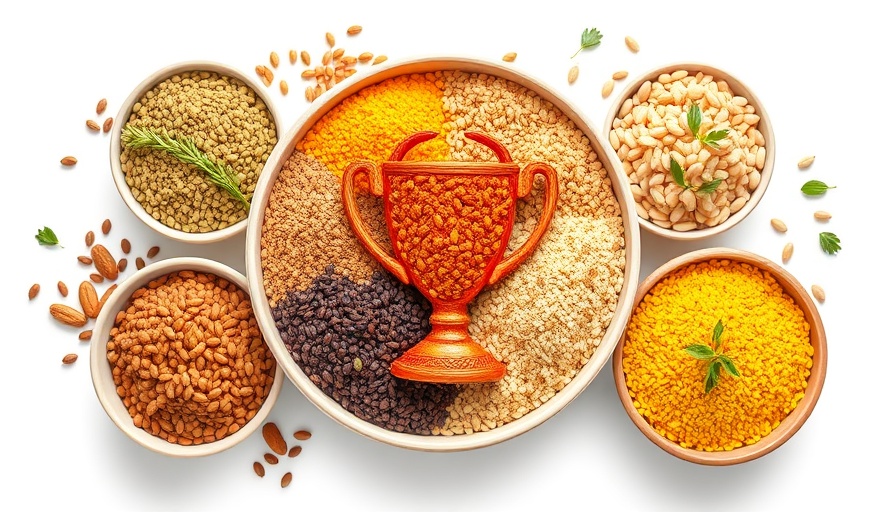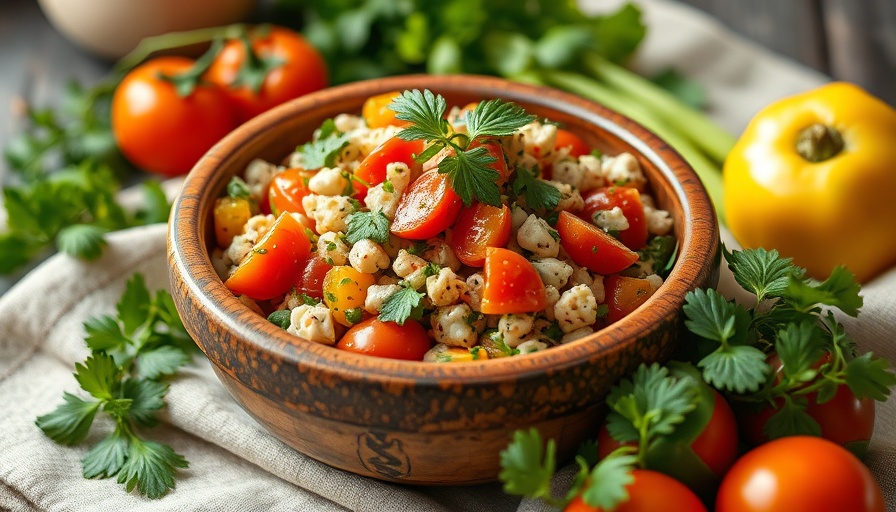
Unlocking Broccoli's Superpowers: Why Cooking Method Matters
In a fascinating discussion with Professor Tim Spectre, new insights have emerged about how we can maximize the health benefits of one of the world's most nutritious vegetables: broccoli. It’s often overlooked how cooking can significantly influence the nutritional value of our food. But did you know that microwaving broccoli could actually make it four times healthier? This surprising revelation runs counter to the widespread belief that microwaving food depletes its nutrients. As Professor Spectre explains, "You get three or four times more sulforaphane when you microwave broccoli than when you heat it," indicating that this method may actually enhance the vegetable's health benefits.
In 'This Makes Broccoli 4 X Healthier! + How Not To Die Update!', the discussion dives into innovative cooking methods for broccoli, exploring key insights that sparked deeper analysis on our end.
Sulforaphane: The Secret Ingredient
Sulforaphane, a powerful compound found in cruciferous vegetables like broccoli and kale, holds a plethora of health benefits. From anti-cancer and anti-inflammatory effects to improved brain and heart health, sulforaphane plays a key role in detoxification and digestion. It’s believed to block DNA mutations, slow tumor growth, and even increase the death of cancer cells—truly a remarkable compound that challenges our traditional views on cooking methods. For families looking to boost their health, incorporating sulforaphane into their diet could be life-changing.
How to Maximize Nutritional Benefits
Alongside Professor Spectre’s cooking advice, Dr. Michael Greger shares an important update regarding the preparation of cruciferous vegetables, specifically in his upcoming 10th-anniversary edition of How Not to Die. The outdated 'chop and hold' method is no longer a strict requirement. You no longer need to wait 45 minutes after chopping vegetables to let their sulforaphane levels rise; waiting even just 30 minutes can deliver significant benefits. This simpler approach encourages families to enjoy these delicious vegetables without overthinking their preparation.
Creating a Family-Friendly Plant-Based Kitchen
Integrating more broccoli and other plant-based foods into your family's diet doesn't have to be daunting. With methods like microwaving and the updated chopping technique by Dr. Greger, families can easily prepare healthy meals that contribute to a healthier body and lifestyle. For parents, this is an important opportunity to cultivate healthy eating habits in children, making it easier to transition into a plant-based diet that is rich in nutrients.
Impact of Diet on Health and Well-being
By understanding the science behind cooking methods and nutrient preservation, families can make informed decisions about their meals. The shift toward a plant-based diet is not only about reducing meat consumption; it's about increasing the variety of nutrient-dense foods like broccoli, which provide our bodies with essential vitamins and minerals. This approach promotes holistic well-being and aids in the prevention of chronic diseases, ensuring our families remain active and healthy.
Final Thoughts
Healthy eating is a continuous journey, and it starts with making small changes in our kitchen. By adopting simple techniques, families can unlock the full potential of their food, like broccoli, and embark on a path toward better health. So next time you're in the kitchen, consider using the microwave to prepare your broccoli—your body will thank you!
 Add Row
Add Row  Add
Add 




Write A Comment